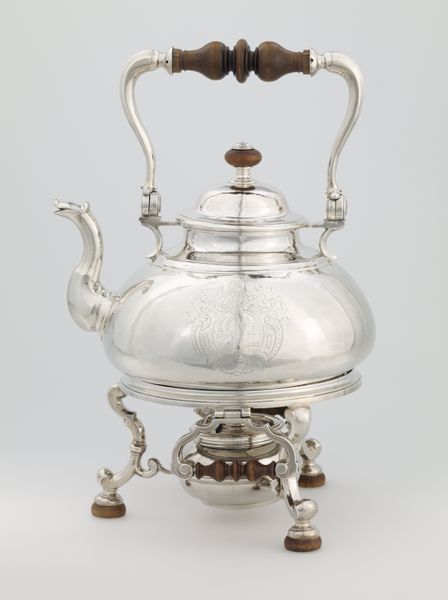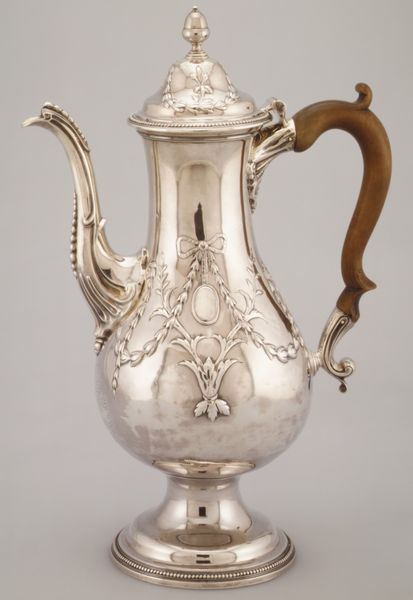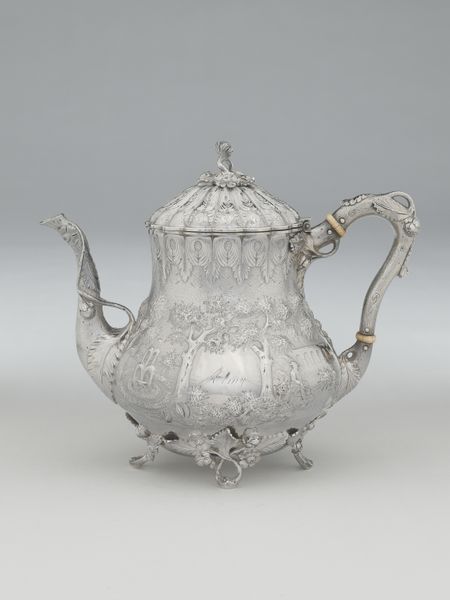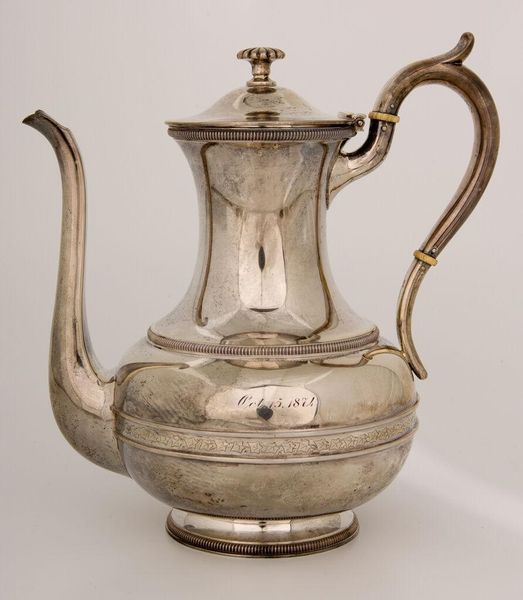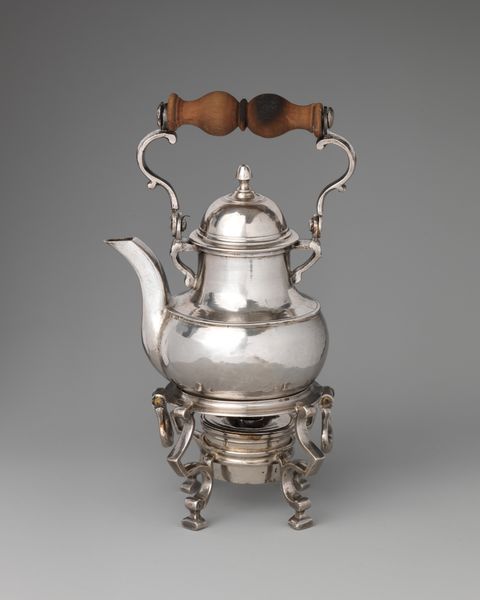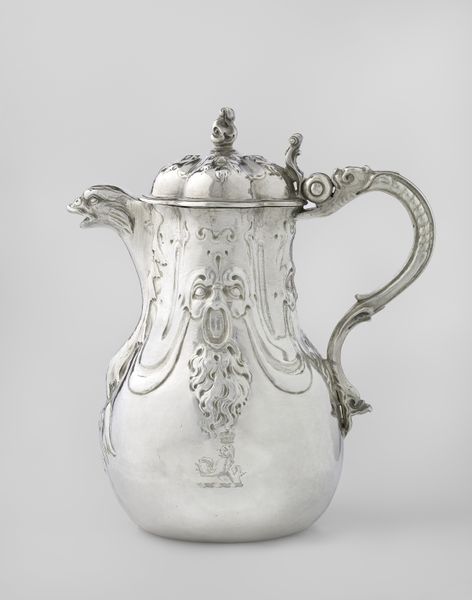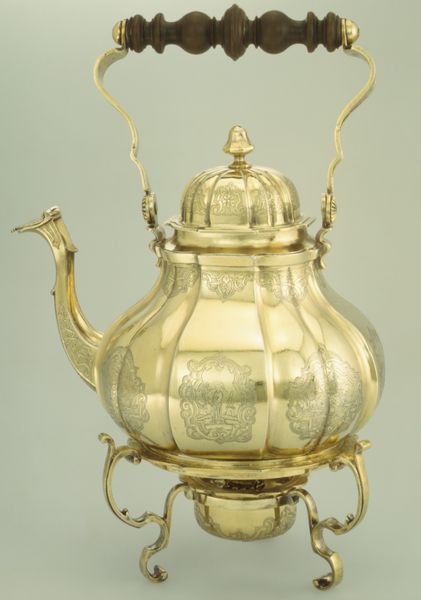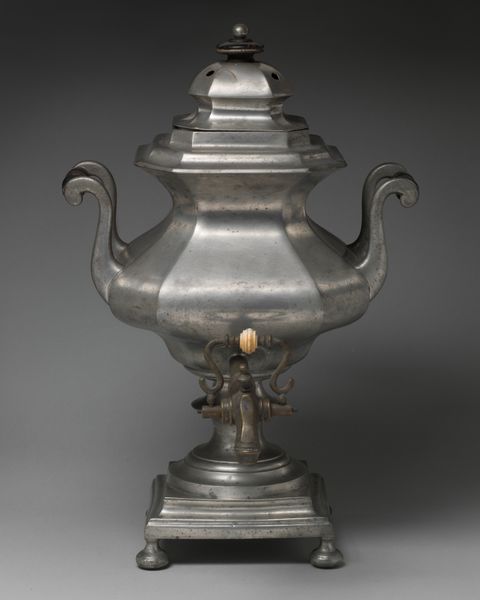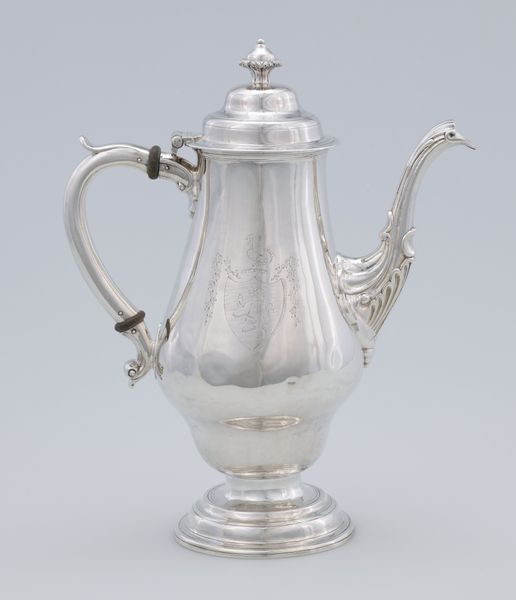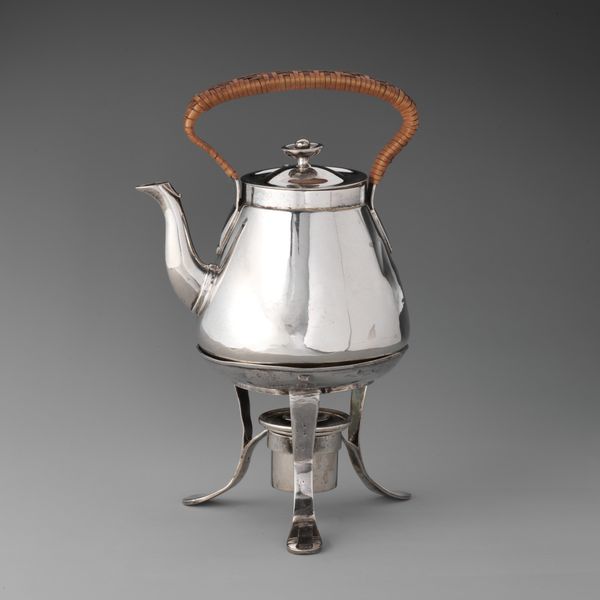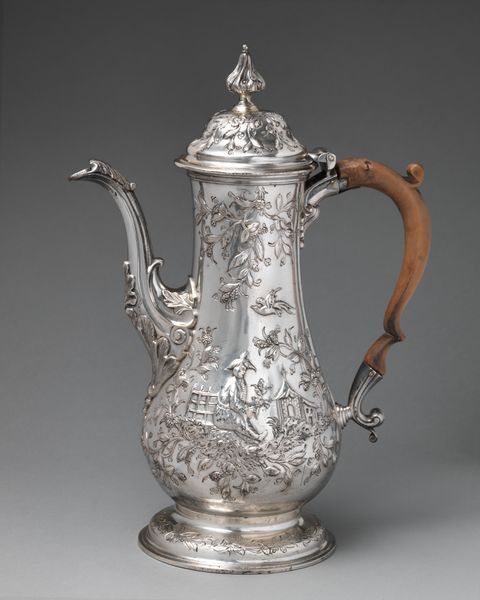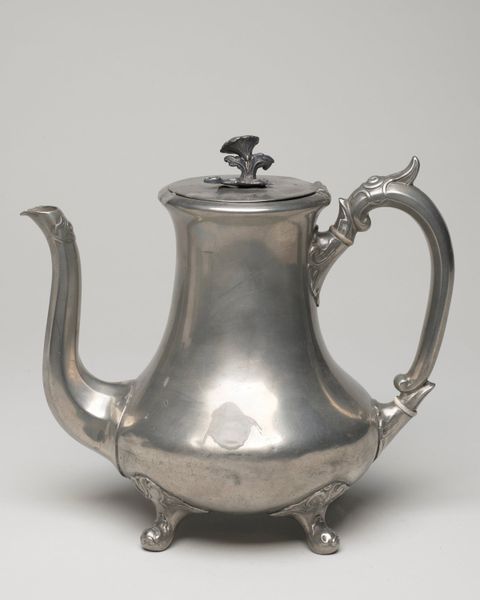
brass, metal, sculpture
#
brass
#
metal
#
sculpture
#
sculpture
#
decorative-art
Dimensions: Overall: 15 3/4 x 9 5/16 in. (40 x 23.7 cm); 68 oz. 4 dwt. (2120.7 g) Body: H. 11 5/8 in. (29.5 cm); 42 oz. 4 dwt. (1312.6 g) Stand: H. 4 1/2 in. (11.4 cm); 21 oz. 10 dwt. (669.3 g) Lamp: H. 2 3/8 x 2 3/4 in. (6 x 7 cm); 4 oz. 9 dwt. (138.8 g)
Copyright: Public Domain
Curator: Looking at this gleaming object, I’m struck by its sheer extravagance. Editor: Indeed. What we have here is a brass teakettle, created by William Forbes between 1837 and 1840. Curator: It is more than just a kettle. Look at the meticulous craftsmanship in the decorative detailing, the intricate stand, the sculpted spout. Clearly, more labor went into its manufacture than simple function demanded. I am particularly drawn to the subtle floral patterns etched into the body. These suggest both an embrace of nature and the high level of skill required to produce such delicate metalwork. Editor: Right. Consider its placement within the domestic sphere. A piece like this would have been a centerpiece, a visible symbol of wealth and status within the household. It speaks volumes about the rituals of tea and the societal importance of the hostess, doesn't it? The entire scene screams "leisure". Curator: Absolutely, it invites us to consider the material culture of the time, its decorative elements are speaking to ideas of elegance and status. And in addition, how did artisans learn these techniques? What were their working conditions? How did this object, move through society? Editor: Excellent points! And what did tea represent socially in this period? Who had access to these refined objects? It hints at a system where the domestic rituals are, themselves, political, where things as commonplace as this teapot reinforce hierarchies. Curator: Precisely, the interplay between object, consumer, and production shapes societal behavior. Its form, while rooted in practicality, is undoubtedly elevated for show. Editor: Agreed, reflecting on this brass teakettle illuminates much more than just its aesthetic appeal. It tells us about the power structures and consumption habits that dictated daily life during that period. Curator: Thank you, considering its manufacture alongside its use provides invaluable context. Editor: And reflecting on its societal significance offers greater clarity about our shared past.
Comments
No comments
Be the first to comment and join the conversation on the ultimate creative platform.
